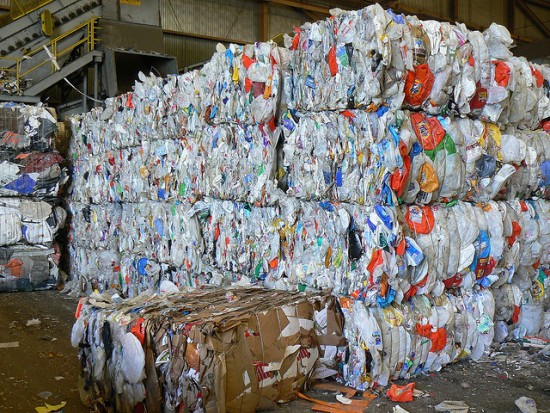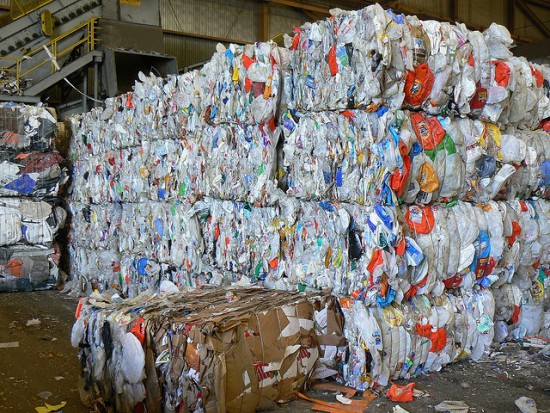 Bales of plastic are collected at Recology’s Pier 96 facility.Photo: Walter ParenteauGarbage: it’s gross, it stinks, and all anyone wants is to be rid of it.
Bales of plastic are collected at Recology’s Pier 96 facility.Photo: Walter ParenteauGarbage: it’s gross, it stinks, and all anyone wants is to be rid of it.
For most cities, that means sending thousands of tons of unwanted flotsam and jetsam to landfills every day. But in San Francisco, garbage is treated like a resource that shouldn’t be wasted. And that means formulating a plan to reduce the city’s garbage output to zero. Yes, that’s right: zero.
Sound impossible? Well, thanks to the country’s toughest mandatory recycling and composting laws, the amount of refuse that San Francisco diverts to recycling and compost is nearing 80 percent, and keeps on climbing each year. (Read a Q&A with San Fran’s top recycling official to find out how the city makes it happen.)
The beginning
San Francisco’s zero-waste quest was touched off by AB 939, a 1989 law that required California towns to divert 50 percent of their trash away from landfills. Inspired, San Francisco decided it could do even better.
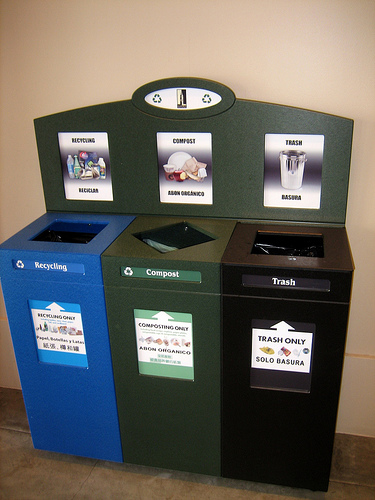 Throughout San Francisco, public bins offer options for trash, composting, and recycling.Photo: Christopher Porter“There was a perceived shortage of landfill space,” says the bill’s sponsor, former California Assemblyman Byron Sher. “San Francisco was a poster city for the problems. … [The city] had to transport its solid waste over the Altamont Pass at considerable expense to the city.”
Throughout San Francisco, public bins offer options for trash, composting, and recycling.Photo: Christopher Porter“There was a perceived shortage of landfill space,” says the bill’s sponsor, former California Assemblyman Byron Sher. “San Francisco was a poster city for the problems. … [The city] had to transport its solid waste over the Altamont Pass at considerable expense to the city.”
Randy Hayes, then president of San Francisco’s Commission on the Environment, saw a unique opportunity. The city worked with its exclusive waste hauler, Norcal Waste Systems (since rebranded as Recology) to run a dozen experimental pilot programs, augmented by community outreach meetings and teams dispatched to train businesses and residents. In 2000, a three-stream system was established: blue bins for recycling, green for compost, and black for landfill.
Collecting data about the city’s refuse was key. “We do a lot of analysis of what San Francisco sends to the landfill,” says Recology spokesman Robert Reed. “We look closely at the garbage … and we saw a lot of food, so we designed this urban food scrap collection program.” Following successful tests, home composting was made mandatory in 2009.
The new law has been met with more eagerness than outrage, thanks in part to a public education campaign that demonstrated the ease and convenience of composting.
The dreamers
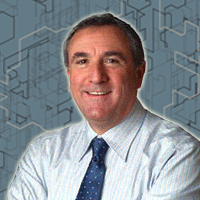 The city’s success might not have been possible without Recology President Mike Sangiacomo, who was among the first in the hauling industry to push for new recycling and composting technology. At Sangiacomo’s behest, Recology recently joined The Product Stewardship Council to push for packaging reform.
The city’s success might not have been possible without Recology President Mike Sangiacomo, who was among the first in the hauling industry to push for new recycling and composting technology. At Sangiacomo’s behest, Recology recently joined The Product Stewardship Council to push for packaging reform.
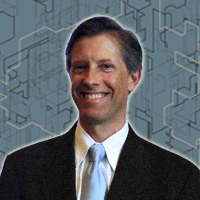 Jack Macy and the city’s environmental staff worked hand-in-hand with Recology to develop a feasible zero-waste plan. “We wanted to say, ‘Well, when you’re at 90 percent you’re doing an awesome job, but then if you say that’s the ultimate goal, you’re saying it’s okay to be wasting 10 percent of your resources,'” said Macy, the city’s Commercial Zero Waste Coordinator. “As long as we’re taking nonrenewable resources and throwing them away, that’s not sustainable.”
Jack Macy and the city’s environmental staff worked hand-in-hand with Recology to develop a feasible zero-waste plan. “We wanted to say, ‘Well, when you’re at 90 percent you’re doing an awesome job, but then if you say that’s the ultimate goal, you’re saying it’s okay to be wasting 10 percent of your resources,'” said Macy, the city’s Commercial Zero Waste Coordinator. “As long as we’re taking nonrenewable resources and throwing them away, that’s not sustainable.”
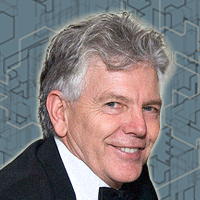 Randy Hayes was one of the first to push for zero waste at the city level. He explained that due to state and federal leaders’ political gridlock, local initiatives are key to enacting environmental reform. “The fallback becomes cities,” he said. “If you look around the world at bold policy shifts, you’ll see many more examples at a city level.”
Randy Hayes was one of the first to push for zero waste at the city level. He explained that due to state and federal leaders’ political gridlock, local initiatives are key to enacting environmental reform. “The fallback becomes cities,” he said. “If you look around the world at bold policy shifts, you’ll see many more examples at a city level.”
San Francisco leaders were initially skeptical, and asked the Department of Environment to reach a 75 percent diversion rate before setting loftier targets. But zero-waste evangelists had a powerful ally: average San Francisco citizens. “I’ve carried a lot of environmental legislation in my time,” said AB939 sponsor Byron Sher. “But in the sense of one that was embraced by the public, this clearly has to be at the top of that list. People want to do the right thing.”
The money
Diverting waste from landfills required new technology and equipment, the cost of which was borne by Recology. The company spends “millions” to provide San Francisco residents with all those bins, and spent $38 million, to build a new recycling plant on Pier 96 in the early 2000s. Recology also spent $2.5 million in 2009-10 to upgrade technology at Jepson Prairie Organics, where they compost food scraps.
Most customers only see the three bins, but behind the scenes, Recology has developed 18 separate recycling programs — more than any city in the country — to maximize diversion.
In addition to the ecological benefit, San Franciscans have a financial incentive to sort their waste. Customers who reduce their landfill-bound garbage get deductions on their hauling bills, and there’s no fee for additional recycling and compositing bins. By sorting waste, businesses can save hundreds or even thousands of dollars, said Jack Macy.
The outcome
With the amount of garbage going to landfills steadily dwindling, San Francisco’s war on waste is so far a huge success. In 2008, the last year for which the city has data, the diversion rate was 72 percent, up from 69 percent in 2007 and 67 percent in 2006.
When the city enacted mandatory composting in 2009, the daily volume of compost grew from 400 tons per day to 600. And the initiative is spreading: In August of this year, nearby Marin began curbside pickup of kitchen-scrap compost.
The copycats
Spurred by San Francisco’s success, surrounding cities are rushing to reduce their own landfill dependency. Across the bay, Oakland established its own food scrap collection program, and has targeted 2020 for achieving zero waste. Eco-conscious Berkeley changed the name of its Solid Waste Commission to the Zero Waste Commission, and San Jose is currently running compost pilot programs.
“Eventually, we’re hoping that we’ll only have to pick up the garbage every other week,” said Carol Misseldine, Mill Valley’s Sustainability Director.
In some towns, private citizens step in when their leaders’ waste-reduction plans prove insufficient. Zero Waste Seattle, for example, pushes for citywide composting, as well as for carpet-recycling and the elimination of unnecessary phone books. In Portland, the Zero Waste Alliance seeks to expand the city’s composting program, which is currently limited only to business
es.
Top city officials from around the world have toured Recology’s state-of-the-art facilities. That’s welcome news to Randy Hayes, who went on from the city’s Department of the Environment to found the Rainforest Action Network and to serve as American Director of the World Future Council.
Ultimately, he said, the planet’s survival depends on our ability to reuse resources. “Waste is something we need to virtually eradicate from our society,” he said.

